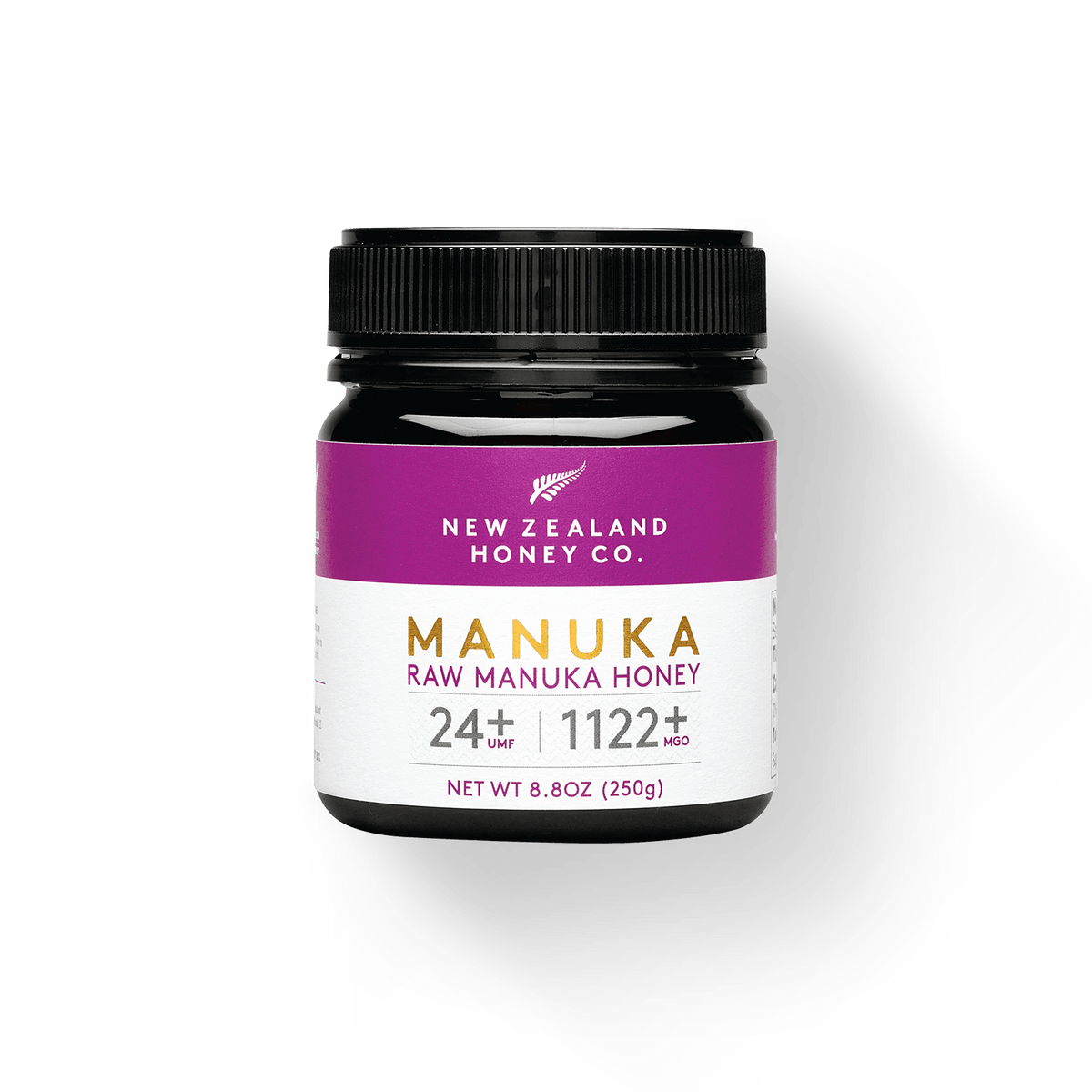EDUCATION
When To Use Manuka Honey On Wounds
4 minute read
Essential Takeaways
Manuka honey is used by doctors and vets alike for their patients in healing some of the most severe wounds.
With its antibacterial and anti-inflammatory properties, as well as its low pH level and emollient effects, manuka honey can lock in moisture, lock out nasties, and help regenerate tissue in wounds.
It’s a natural all-rounder. Just be sure to get the green light from your doctor, as with any other medical treatment.
Manuka honey has long been revered for its remarkable healing properties, especially when it comes to treating wounds and skin ailments.
If you're wondering about the optimal times to incorporate manuka honey into your wound care routine, this blog will guide you through the reasons, methods, and precautions to keep in mind when using this golden elixir.
In this guide, you’ll find:
NB: Remember to always ask your doctor before using anything for medical purposes, even something all-natural like pure honey.
Why Use Manuka Honey On Wounds?
Manuka honey is used by doctors and vets throughout the world for some of the most serious wounds and skin conditions.
Why?
Let’s find out.
For its antibacterial and antimicrobial properties
Manuka honey stands out for its high concentration of methylglyoxal (MGO), a natural compound known for its potent antibacterial and antimicrobial effects.
Applying manuka honey to wounds creates a protective barrier, shielding against infection while promoting healing.
To speed up wound healing
The unique composition of manuka honey supports the wound-healing process.
It helps stimulate tissue regeneration, reduce inflammation, and minimise scarring.
Its natural enzymes contribute to a moist wound environment, which is conducive to optimal healing.
Its natural anti-inflammatory effects
Manuka honey's anti-inflammatory properties help to reduce swelling and discomfort associated with wounds.
This can be particularly beneficial for people with skin conditions, cuts, burns, or minor injuries.
Its hygroscopic properties and pH level
Manuka honey absorbs moisture from the air which helps to keep wounds clean and moist.
It also has a lower pH, which helps with decreasing wound inflammation.
When To Use Manuka Honey On Wounds
Manuka honey is known for its unique properties which can be beneficial in wound care. It's important to understand when and how to use it effectively.
Manuka honey can be applied to a variety of wounds including:
-
Acute wounds: Such as cuts, abrasions, burns or surgical incisions.
-
Chronic wounds: Like diabetic ulcers, venous ulcers, or pressure sores.
You might consider using manuka honey on a wound when:
-
Infection is present: Honey has natural antibacterial properties.
-
Healing is delayed: Manuka honey is known to support the healing process.
Remember to speak with a healthcare professional before applying manuka honey or any product to a wound.
How To Use Manuka Honey On Wounds
Once you’ve got the go-ahead from your doctor, here are our top tips for using manuka honey on a wound.
Get the right kind of manuka honey
Opt for a high-quality, UMF™-certified manuka honey.
The Unique Manuka Factor (UMF™) rating ensures that you’re getting an authentic and potent product.
For wound healing, we typically recommend a UMF™ 15+ | MGO 514+ grade or above. The higher the grade, the more potent its antibacterial properties.
Cleanse the wound
Before applying manuka honey, ensure that the wound is clean and free from debris.
Gently wash the area with mild soap and water, and pat it dry.
Apply the manuka honey
Use a sterile applicator or a clean spatula to put a thin layer of manuka honey over the wound.
Cover the honey-coated area with a sterile dressing or bandage to keep it in place.
How Often Should You Put Manuka Honey On a Wound?
Determining the frequency of applying manuka honey to a wound depends on a range of factors, including the severity of the wound, the healing progress, and individual preferences.
Here's a guide to help you navigate the optimal frequency for using manuka honey on wounds:
Mild to moderate wounds
For minor cuts, abrasions, or superficial wounds, applying manuka honey once a day may be sufficient.
Ensure the wound is clean, and cover it with a sterile dressing after applying the honey.
Moderate to severe wounds
In cases of deeper wounds, burns, or chronic skin conditions, you may consider applying manuka honey twice a day – once in the morning and once before bedtime.
This increased frequency can enhance the honey's continuous therapeutic effect.
Persistent or slow-healing wounds
If the wound shows signs of slow healing or if you have a chronic condition, you might choose to apply manuka honey more frequently, under the guidance of your healthcare provider.
This could involve three or even four applications per day to accelerate the healing process, depending on what your doctor recommends.
Regular monitoring
Regardless of the wound’s severity, it's crucial to monitor its progress.
If you notice signs of improvement, such as reduced redness and swelling, you can gradually decrease the frequency of applying manuka honey.
On the other hand, if there's no improvement or if the condition worsens, contact your doctor promptly.
Remember that manuka honey is a complementary therapy, and it should not replace professional medical advice or prescribed treatments. Your healthcare provider can offer insights based on the specific nature of the wound and your overall health.
Get Your Premium Medical-Grade UMF™ Manuka Honey
Here at New Zealand Honey Co., we only deal with real.
So you can trust that all our honeys are 100% pure, raw, monofloral manuka honey from New Zealand.
Still unsure which grade is right for you?
Your wellness journey starts with a spoonful a day.
SUBSCRIBE TO OUR NEWSLETTER
Receive our latest releases, offers, guides and more.
